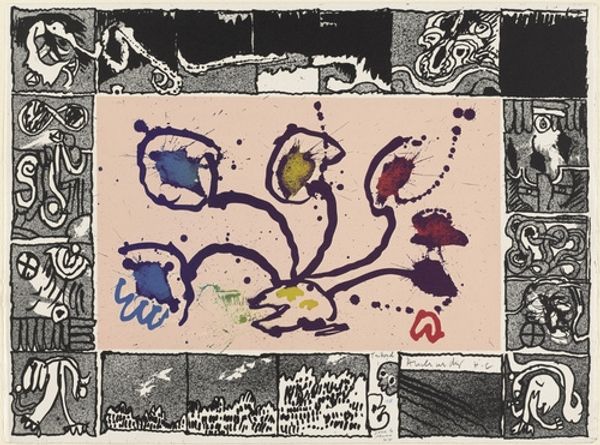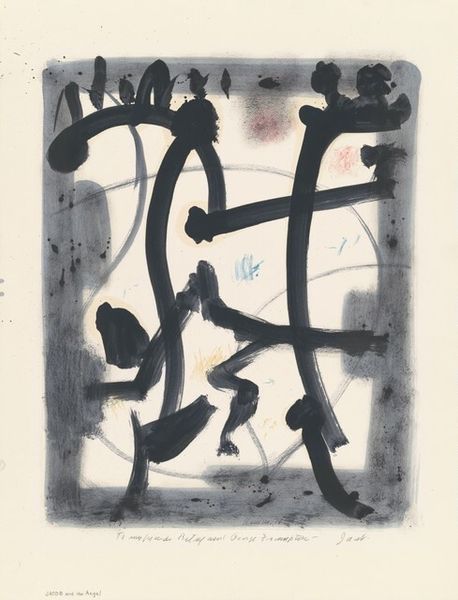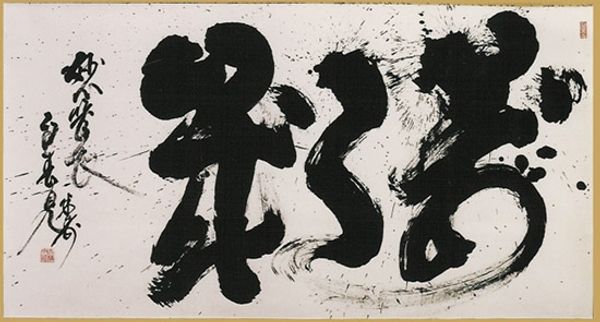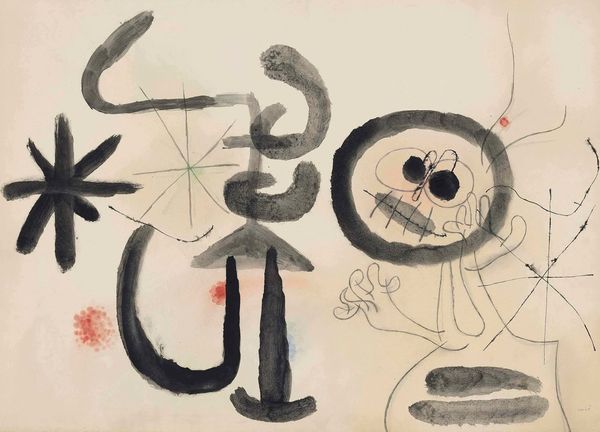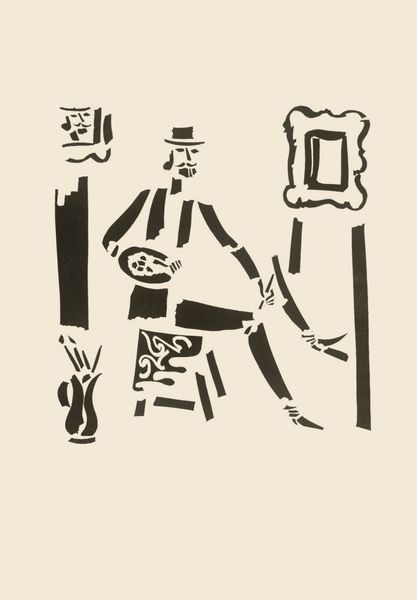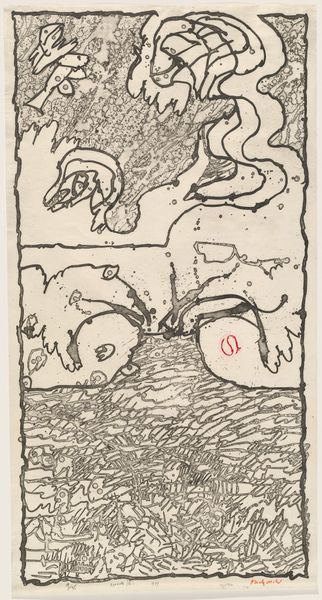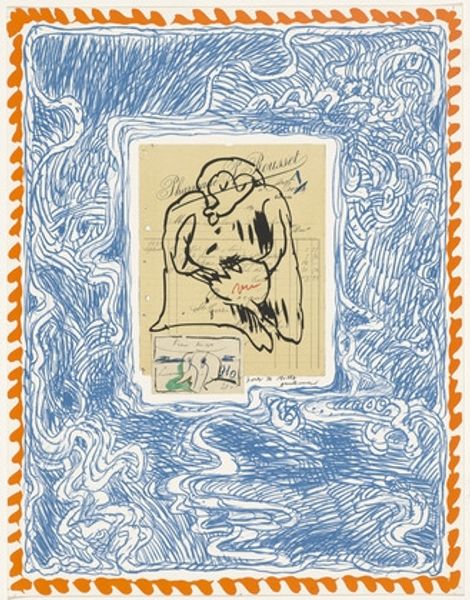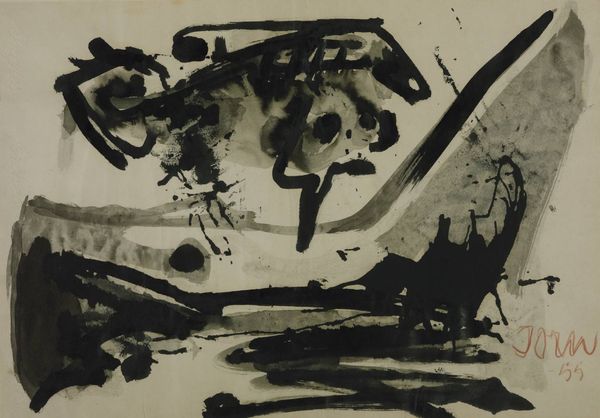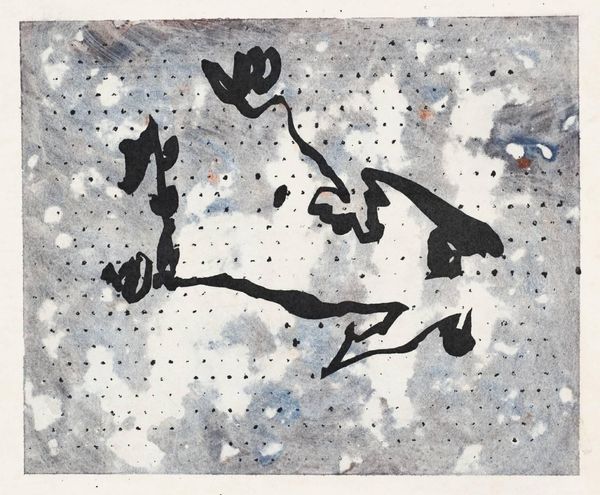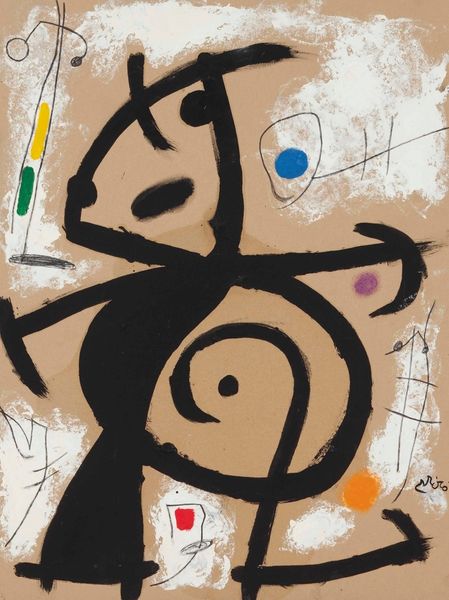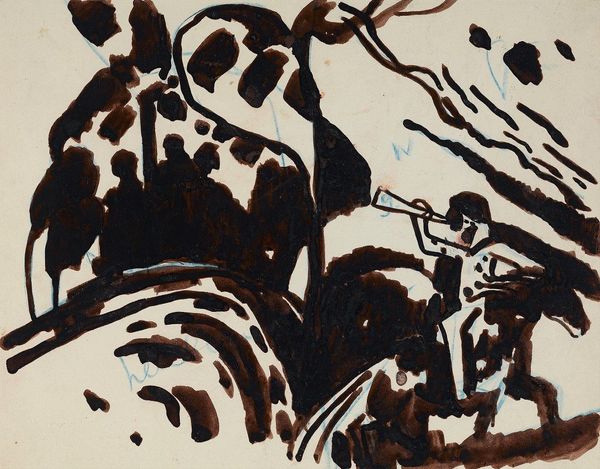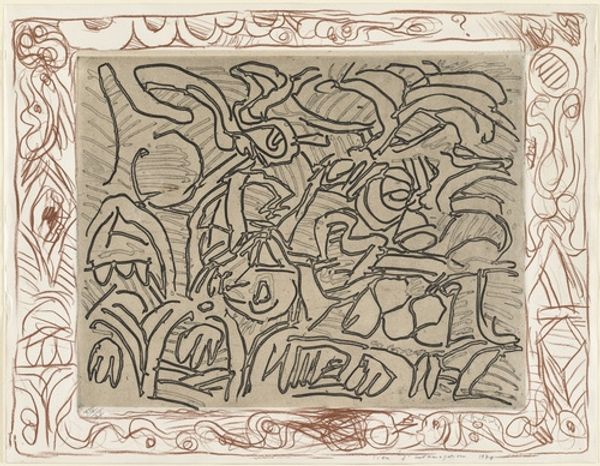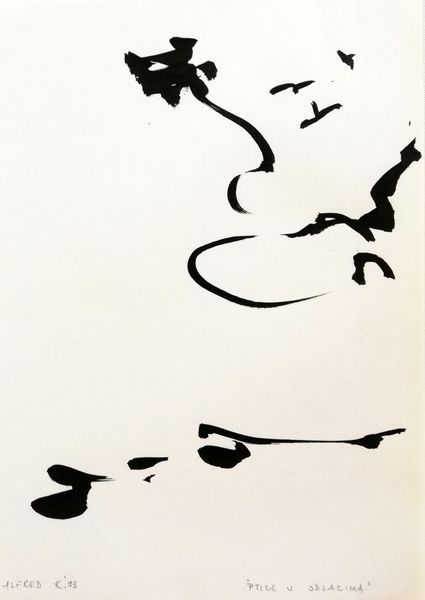
graphic-art, collage, print, ink
#
graphic-art
#
collage
#
ink painting
# print
#
ink
#
linocut print
#
art-informel
#
abstraction
Copyright: Pierre Alechinsky,Fair Use
Curator: Pierre Alechinsky's "Amsterdam," created in 1965, employs ink and collage in a manner quite evocative of mid-century Art Informel. The work combines graphic art and printmaking, resulting in something quite striking, don't you think? Editor: It does have an immediacy to it, almost like automatic writing—visceral and raw. The tension between the contained central image and the looser border intrigues me; it's a dance between structure and spontaneity, isn't it? What’s going on politically during that era, what might Alechinsky be responding to? Curator: The socio-political backdrop of 1965 was turbulent, marked by escalating Cold War tensions and civil rights struggles. Now, thinking about Alechinsky’s method: layering and juxtaposing various printmaking techniques to create this mixed media piece is something. Consider how the materials themselves inform the work. What meaning might be teased out from that materiality? Editor: The materiality absolutely speaks to the disjunction of the era— a time of intense social change. Using collage mirrors how society was, and arguably continues to be, assembled and reassembled. The boundaries are so blurred between the frame and center—could that speak to marginalization of the working class by an increasingly disconnected system, the little houses in the print's borders are the working-class residents, maybe? Curator: Possibly. The layering of ink suggests an almost frenetic energy. I’m wondering if Alechinsky was thinking of that—how the material elements are deployed within the frame. Each print and mark exists because of a sequence of production events, so what do the traces of his work say about those procedures? Editor: And those figures circling the interior scene. Who are they, and what's their relationship to what is seemingly being barricaded from view? This calls attention to the artist's— and by extension, our own—act of observation, making me wonder about themes of control, knowledge, and exclusion... It's powerful. Curator: It seems to speak volumes to that moment, a time of rapid transformations— in art as well as culture more generally. Thanks for sharing these reflections. Editor: Thanks, likewise. It seems as relevant today as ever, really.
Comments
No comments
Be the first to comment and join the conversation on the ultimate creative platform.

